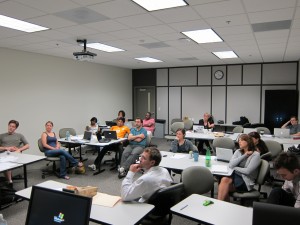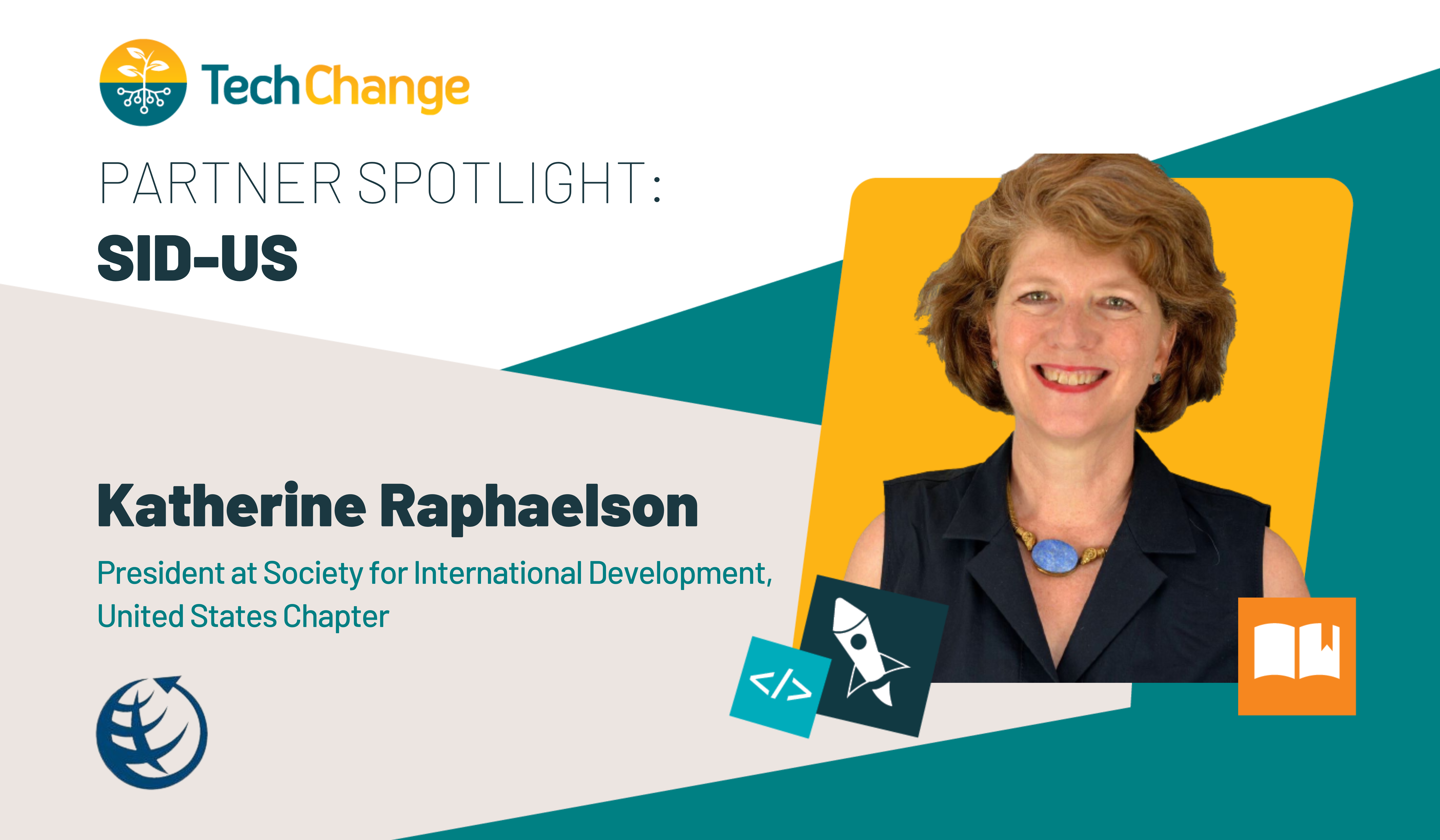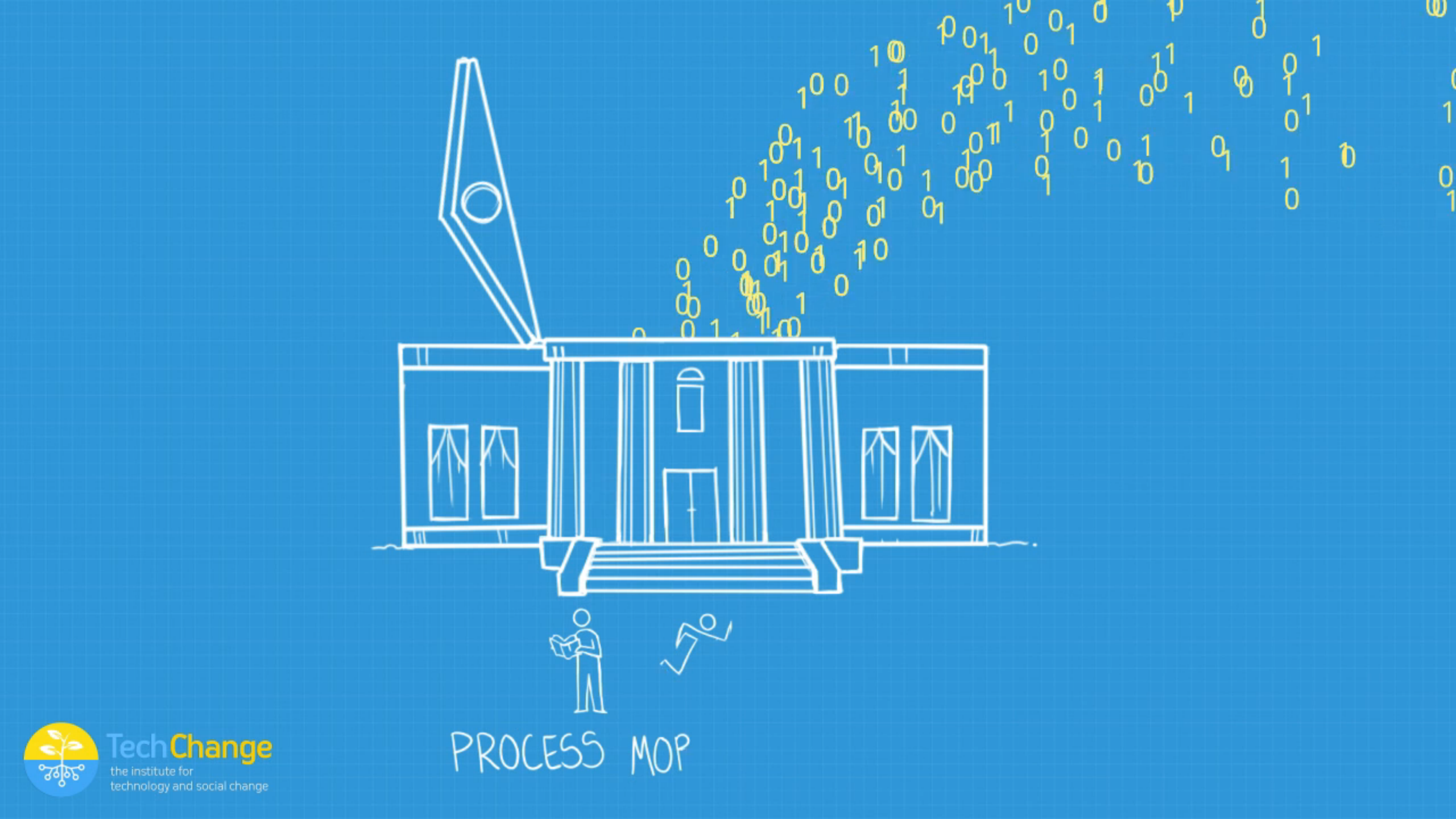 Two weeks ago I participated in a “Technology and Peacebuilding” course taught by TechChange, at the School for Conflict Analysis and Resolution (S-CAR), George Mason University. As a graduate student I am always looking for practical, hands on courses to contribute to my skill set. The course provided background on a variety of tech tools used in conflict or disaster settings; we also used some of these tools in class through simulations. The simulations gave me an introduction to using the tools, in a fun and innovative way, while reminding me to proceed with caution when using technology, especially in conflict or disaster settings. One tool we learned about and applied was Frontline SMS, and through our simulations I experienced being on both the sending and receiving ends of this tool. Frontline SMS allows for two way communication between an organization, which has the Frontline SMS program on their computer, and individual cell phone users who give their phone number to the organization. With this tool, an organization can send and receive text messages to and from a large number of individuals.
Two weeks ago I participated in a “Technology and Peacebuilding” course taught by TechChange, at the School for Conflict Analysis and Resolution (S-CAR), George Mason University. As a graduate student I am always looking for practical, hands on courses to contribute to my skill set. The course provided background on a variety of tech tools used in conflict or disaster settings; we also used some of these tools in class through simulations. The simulations gave me an introduction to using the tools, in a fun and innovative way, while reminding me to proceed with caution when using technology, especially in conflict or disaster settings. One tool we learned about and applied was Frontline SMS, and through our simulations I experienced being on both the sending and receiving ends of this tool. Frontline SMS allows for two way communication between an organization, which has the Frontline SMS program on their computer, and individual cell phone users who give their phone number to the organization. With this tool, an organization can send and receive text messages to and from a large number of individuals.
During our first simulation, I was working for a public health NGO in Malawi, during a malaria outbreak. My colleague and I were responsible for communicating with our other colleague and patients identified in the field. We used Frontline SMS to find out what symptoms patients had, provide direction to our field colleague to deliver patients medicine, and to follow up on patients’ status and progress. The first and most obvious limitation is this tool can only be used in settings where there is good cell phone coverage and where a significant enough amount of the population has access to cell phones. However, there were other challenges we encountered. First, you must write your messages as concisely as possible to ensure the information you are sending can be conveyed in one message. In one instance, the message we typed was too long and the patient received two separate messages, causing confusion due to a slight time lag in delivery. The user must also be aware of this slight time lag. Depending on the level of cell phone coverage in a country, events can change by the time a message is conveyed (this is something I experienced on the receiving end as well). Another challenge and an important one is acquiring and convincing the user to communicate with you through text messaging. One of our patients never responded to our text messages, and in the field there will most likely be resistance on the part of some individuals.
In another simulation, I played the role of an Afghan citizen, and the UN used SMS Frontline along with Ushahidi to communicate to citizens which polling locations were open and safe. Being on the receiving end was a different experience, and I had some anxiety waiting for text messages to know when and where I could go vote. I would imagine in a real life situation, when one’s life could be at stake if they went to the wrong polling booth at the wrong time, they may also be anxious. In one instance, due to a time lag of when I received the message on my phone and got to the polling booth it was closed—even though the text message I got told me it was open. Sometimes, events on the ground change faster than any tech tool can communicate the information. In another group, an election monitor was captured by the Taliban and was forced to send misleading information to the UN staff. This also raises the concern of security when using text messaging and users must be cautious of who is sending and receiving messages, making sure information and tools (in this case the cell phone and computer) stays out of the wrong hands. Despite these two incidents, the UN sent me text messages which allowed me to vote safely and successfully in three of four rounds of voting. This may not have been possible without the information the UN was sending me as I would have guessed where to go, and may have gone to a closed or unsafe polling booth.
Despite the challenges of convincing sometimes hesitant users, occasional time lags, and security threats posed by imposters, Frontline SMS is an efficient way to communicate with large amount of people at the same time. In settings where field staff is limited and it may be difficult or take a long time to travel between locations, it is a fast and cost effective way to reach out to the population. Keep in mind, in many countries cell phone users often pay for each text message they send and receive, thus text messages should be sent only as necessary to limit cost for the user. Since adequate cell phone coverage is necessary, Frontline SMS may not be the best tool to use in the aftermath of a natural disaster such as an earthquake or tsunami. However, once cell phone coverage is re-established it could help distribute information on where to find relief centers, or reunite missing individuals with their families. It can be used to serve as a warning system for natural disasters, provide polling information during elections, and for public information campaigns such as warnings about outbreaks of epidemics, prevention of disease, and warnings about security threats such as curfews and areas which should be avoided. Frontline SMS is a simple and efficient tool to get an important message out in a short period of time.



